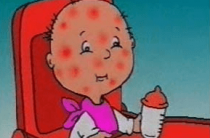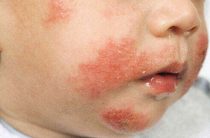Allergy is one of those diseases that a person has to deal with most often. At the same time, there are many special preparations to combat it, thanks to which it is possible to eliminate the symptoms of allergic diseases, with a high degree of effectiveness, if it was not possible to prevent contact with the allergen.
Allergy preparations are currently used exclusively as a means for symptomatic treatment. They are not able to act on the cause of allergic reactions - the malfunctioning of the immune system. There are quite a few varieties of allergy drugs: antihistamines, corticosteroids, membrane stabilizers, vasoconstrictors. These drugs can be used in a wide variety of forms: tablets, injections, ointments, drops, sprays.
Antihistamines
As the name implies, this group of drugs is directed against the action of a hormone such as histamine. Why is it so important to neutralize the effect of this substance in order to cope with allergy symptoms? The fact is that histamine is a special hormone with a wide functional spectrum. One of its actions is the development of symptoms of allergic reactions. It is able to affect the cells of the mucous membranes, skin, as well as blood vessels.
This is achieved due to the fact that these cells have special receptors (H1). Released under the action of antibodies that are produced in response to the allergen, histamine enters the general circulation, through which it reaches sensitive cells and triggers a cascade of allergic reactions. Antihistamines work by preventing histamine from reaching its receptors. As a result, the allergic reaction is interrupted. The most effective method by which the use of antihistamines is carried out is the use a few days before the alleged contact with the allergen.
In the modern pharmacological market, a large number of antihistamines are available. Since 1936 - the moment of the release of the first antihistamine drug Demidrol, a lot of time has passed, during which there was a search for new formulas. As a result, three generations of these drugs are currently available. Often, the younger the antihistamine is, the more effective and safe it is. However, in some cases, the use of the first antihistamines may have been necessary, which is why they are still used today.
1st generation drugs
These drugs are the first in their class. Their active substances lose contact with receptors very quickly, which leads to a short duration of the therapeutic effect (4-8 hours). Also, another disadvantage of these drugs is the extremely rapid addiction, as a result of which the use of these medications loses their therapeutic effect. Because of this feature, it is impossible to choose one, the most favorably tolerated drug, these funds require constant replacement, every 2-3 weeks.
In addition, there is one significant nuance that forces you to abandon the use of these drugs more and more often. This feature is due to the ability of the influence of antihistamines to act also on the receptors of the central nervous system. This leads to the intensive development of inhibitory processes in the body, which are manifested by a feeling of lethargy, daytime sleepiness, constant fatigue and lethargy.
Diphenhydramine is an effective drug for relieving symptoms of allergic reactions. It has the strongest inhibitory effect on the central nervous system, which is manifested by severe drowsiness and fatigue, a decrease in reaction. This group of side effects, in practice, is very difficult to tolerate, which forces either to refuse the use of diphenhydramine, or forces you to change your lifestyle during treatment.
Diazolin is a drug that practically does not cause a depressant effect on the central nervous system. The negative side of taking it is an increased risk of peptic ulcer or gastritis of the stomach. This is due to the fact that the active substance also acts on the receptors of the stomach, causing increased secretion of hydrochloric acid.
Suprastin is one of the safest first-generation drugs. The inhibitory effect on the central nervous system is present, but less pronounced. In general, it is well tolerated by most people.
Tavegil is a fast-acting remedy for relieving the symptoms of allergic diseases. Just like diphenhydramine, it has a strong inhibitory effect on the central nervous system. It is often used to treat conditions such as anaphylactic shock or Quincke's edema, due to its rapid action in relieving allergy symptoms.
2nd generation drugs
Unlike their predecessors, second-generation drugs do not affect the central nervous system. They are extremely convenient in terms of everyday use, because they do not cause drowsiness, and also do not provoke lethargy. The disadvantage of these drugs is that most of them cause disorders of the cardiovascular system, therefore, they are very rarely used in patients with impaired functioning of this organ.
Another significant plus on the side of these drugs is that they do not need to be used often at all. Their action occurs in a wider time range, from 12 to 24 hours. They also do not develop addiction, which makes them suitable for long-term therapy.
Loratidine is an effective drug to counter the symptoms of allergic rhinitis and conjunctivitis, most commonly used for respiratory allergies. It also suppresses itching and vasodilation that accompany an allergic reaction. Unfortunately, it causes dizziness and nausea in some patients.
Clarisens - the effectiveness of this drug is due to the fact that in addition to its antihistamine effect, it also has the ability to suppress the release of leukotreins, which are also involved in allergic reactions. The therapeutic effect occurs within half an hour. In some cases, subject to intolerance, its administration may be accompanied by migraine attacks and dyspeptic symptoms.
Claritin is an effective substance that not only blocks histamine receptors, but also prevents the release of serotonin, which is also responsible for some allergic reactions. Most patients, the drug is well tolerated and causes side effects, only in rare cases. The therapeutic effect develops after 10 hours and lasts a day, which makes it a drug that is convenient to use, but not suitable for stopping acute allergic reactions.
Cestine - effectively copes with various symptoms of allergic diseases. The effect of its use lasts for several days, which makes it an extremely effective long-term allergy drug.
Corticosteroid drugs for allergies
Corticosteroids are a group of drugs based on the effects of synthetic corticosteroids, as well as their derivatives. They have a pronounced anti-inflammatory effect, relieve vasodilation, prevent allergic rhinitis, relieve skin manifestations of allergies. They have a universal effect on allergy symptoms, as they neutralize all phases of the immune response. In the modern medical arsenal aimed at combating allergies, corticosteroids are the most powerful tools. They are used as a means to relieve acute manifestations of allergic reactions. The course of therapy, while often does not exceed more than 5 days.
Side effects:
- Violation of sodium excretion, accompanied by the development of edema of the limbs and face;
- Decreased bone density;
- Increasing the concentration of glucose in the blood;
- Destruction of muscle protein;
- Dystrophy of the heart muscle (with long-term use);
- Weakening of the strength of joints and ligaments;
- Disruptions in the menstrual cycle;
- Violation of immunity;
- Decrease in the speed of regeneration processes (slow down recovery after traumatization);
- Increase in body weight due to body fat;
- Decreased functional ability of the adrenal cortex
Mast cell membrane stabilizers
Mast cell membrane stabilizers are drugs that make the wall of mast cells chemically neutral, preventing it from opening. As a result, the histamine they contain does not enter the general circulation and does not cause allergy symptoms. This is achieved by the ability of certain substances to block the calcium-dependent membrane transport channel.
Mast cell membrane stabilizers are not able to cope with allergy symptoms on their own if applied after ingestion. These drugs are most effective when used as a preventive measure. Their use is very effective for carrying out preventive measures aimed at eliminating the symptoms of pollen allergy. In this case, it is possible to calculate the time of flowering of the allergen and start using these drugs in advance.
These drugs include: ketotifen, sodium cromoglycate, cromohexal, tranilast, alomid, allergic chest of drawers, stafen, cromosol, positan, lecrolin, etc.
nose drops for allergies
To treat the symptoms of allergic conjunctivitis, local antiallergic drugs are used, in the form of nasal drops and sprays. Nasal antihistamines begin to develop their activity within 10 minutes after application. The high speed with which the therapeutic effect occurs is the secret of their effectiveness. Also, being a means for local use, nasal drops do not carry such a pronounced side effect as allergy drugs in the form of tablets and injections.
Nazarel is a safe form of a topical drug (fluticasone). An effective and safe drug, which is also used to treat pregnant and lactating mothers.
Allergodil is a drug for the elimination of symptoms of allergic rhinitis based on azelastine, for topical use. It is not used to treat allergic rhinitis in pregnant and lactating mothers, since the active substance has a toxic effect on the fetus.
Histimet is an antihistamine spray that suppresses the symptoms of an allergic rhinitis, nasal congestion, swelling and other symptoms caused by an allergic reaction. It is prescribed for the treatment of allergies in pregnant women, only in case of acute manifestations of allergic rhinitis, which adversely affect the health of the mother and child, with the ineffectiveness of other means.
Fenistil - antihistamine nasal drops that can be used in children older than 1 year.
Corticosteroid nasal drops and sprays
Corticosteroid agents for intranasal use are the most effective. Corticosteroid drops relieve all symptoms of allergic conjunctivitis: eliminate allergic rhinitis, relieve swelling, prevent vasodilation, eliminate sneezing. Corticosteroid drops can cause dryness and irritation in the nose, nosebleeds, and thinning of the nasal septum. To avoid the development of negative side effects, corticosteroid drops are used in short courses, only in the presence of acute manifestations of symptoms of allergic rhinitis.
These drugs include: fluticasone, nasonex, alcedin, flunisolide, beclomethasone, etc.
Vasoconstrictor nasal drops
Vasoconstrictor drops can quickly reduce the swelling of the sinuses, which is one of the most unpleasant symptoms of allergic manifestations. The use of vasoconstrictor drops allows you to quickly restore breathing, which occurs as a result of the expansion of the vessels of the nasal sinuses. A similar effect is achieved due to the fact that these drops contain active substances that affect the narrowing processes in the vessels, thereby removing the excessive blood flow that causes this congestion.
It should be remembered that these drugs are not independent means for the treatment of allergies, since they only temporarily relieve the manifestations of swelling in the sinuses without affecting the cause of its occurrence. For this reason, vasoconstrictor nasal drops are not used as an independent remedy for the treatment of allergies.
These drugs include: naphthyzine, adrianol, tizin, okumetil, betadrin, sanorin, etc.
Allergy eye drops
An allergic reaction often affects our eyes, since this organ, having an increased sensitivity, is the first to be subject to allergic reactions. Such an unfavorable picture can often be observed with a respiratory variety of allergy (to pollen, cat hair, dust, household chemicals, etc.). In view of this, the use of local agents intended for application directly to the conjunctiva is of great importance for the treatment of allergic conjunctivitis.
Antihistamine eye drops are an effective remedy for the prevention and elimination of allergy symptoms.
As in the case of drugs for topical use, their use allows you to block the contact of histamine with receptors, which prevents the development of allergic reactions. These substances include: azelastine, olapatidine, ketotifen, lecrolin, opatanol.
How to apply eye drops:
- Always keep the pipette clean and avoid contamination of the solution;
- Wash your hands and face before instillation;
- Maintain the dosage indicated by the manufacturer or prescribed by a doctor;
- Instillation is carried out in the conjunctival sac;
- After instillation, keep your head thrown back for about 30 minutes so that the active ingredients spread most evenly;
- If you use several eye drops at once, observe the required intervals between their use;
- Be sure to inform your doctor if you have any diseases or disorders of the organs of vision;















